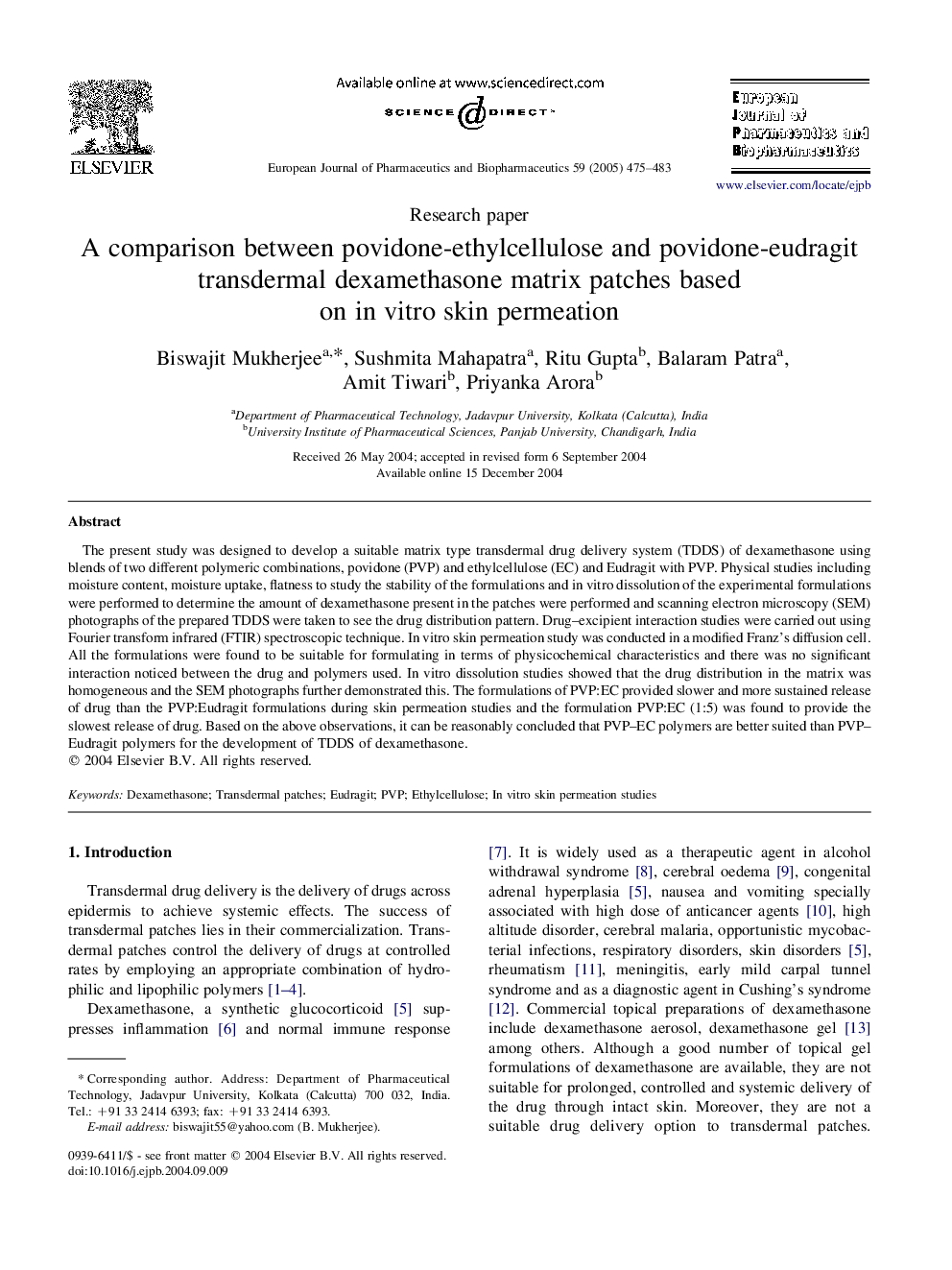| Article ID | Journal | Published Year | Pages | File Type |
|---|---|---|---|---|
| 9901513 | European Journal of Pharmaceutics and Biopharmaceutics | 2005 | 9 Pages |
Abstract
The present study was designed to develop a suitable matrix type transdermal drug delivery system (TDDS) of dexamethasone using blends of two different polymeric combinations, povidone (PVP) and ethylcellulose (EC) and Eudragit with PVP. Physical studies including moisture content, moisture uptake, flatness to study the stability of the formulations and in vitro dissolution of the experimental formulations were performed to determine the amount of dexamethasone present in the patches were performed and scanning electron microscopy (SEM) photographs of the prepared TDDS were taken to see the drug distribution pattern. Drug-excipient interaction studies were carried out using Fourier transform infrared (FTIR) spectroscopic technique. In vitro skin permeation study was conducted in a modified Franz's diffusion cell. All the formulations were found to be suitable for formulating in terms of physicochemical characteristics and there was no significant interaction noticed between the drug and polymers used. In vitro dissolution studies showed that the drug distribution in the matrix was homogeneous and the SEM photographs further demonstrated this. The formulations of PVP:EC provided slower and more sustained release of drug than the PVP:Eudragit formulations during skin permeation studies and the formulation PVP:EC (1:5) was found to provide the slowest release of drug. Based on the above observations, it can be reasonably concluded that PVP-EC polymers are better suited than PVP-Eudragit polymers for the development of TDDS of dexamethasone.
Related Topics
Life Sciences
Biochemistry, Genetics and Molecular Biology
Biotechnology
Authors
Biswajit Mukherjee, Sushmita Mahapatra, Ritu Gupta, Balaram Patra, Amit Tiwari, Priyanka Arora,
